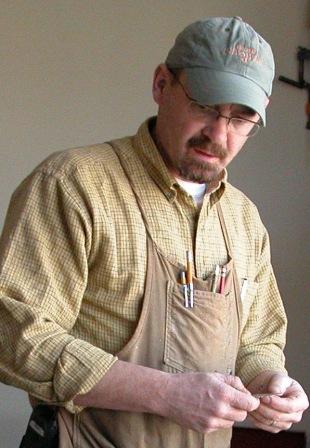James Krenov, who just passed away in October (2009), taught an entire generation of woodworkers to converse with wood; to listen and respond with a thoughtful approach; the dialog informing the very shape and feel of a thing. Design is a tricky thing, but through such a conversation we can at least arrive at a semblance of design quality. We can follow the threads which challenge our notions and preconceptions and thus raise the tenor of the look and feel of a piece beyond that which typically lies within us. Often those ideas raise our skills pushing us to explore new methods and new approaches. Sometimes a design comes together just as conceived. But, more often that which was pictured or drawn fails to live up to expectations. Something says no, we listen, it morphs, we adapt; and after a while we arrive with something that looks better for the conversation. The following tale brightly illuminates this process. I like to make two of something, especially when there are many steps and many problems to work out. I recently wrote in Cabinet-Failures and Illusions about making a handle for a cabinet. I also made an identical cabinet to the one pictured in the aforementioned post; however the two cabinets, although cut at the same time of the same species of wood, have such a different look and feel. One has a more formal feel; tall and straight-grained, clear and uniformly colored. The other one is soft with little obvious grain, but with subtle shading and hue. Dark areas define the panels and the chocolate tone of the wood is quiet and somber. It would be easy to assume that two identically sized and constructed cabinets would look good with identical handles. But, the handles for the chocolate cabinet don't compliment the tall cabinet. I had a long discussion (most of the summer) with the tall cabinet and I eventually ended up down by the creek looking for branches. I found some chokecherry and cut several branches and after stripping them of branches, leaves and bark set them aside to dry . Upon discovering the shape and length that fit and cutting them to size I turned some walnut rings which I could slip over each end. Each was sized to slip to a certain point and then stop. I intended to dowel them through the back and into the cabinet. It just didn't look right. The walnut interrupted the line of the branch and took away from the simplicity of the line. I decided to eliminate the walnut altogether and let the shape of the branch define the cabinet front. That worked. I embonized each handle and mounted them using walnut dowels.


Friday, October 30, 2009
A Tale of Two Cabinets
Posted by
Art
at
10:18 AM
2
comments
![]()
Subscribe to:
Posts (Atom)
Leave A Comment
Hey! Leave a comment - good, bad, short, long, whatever. I'd like to hear from you.



